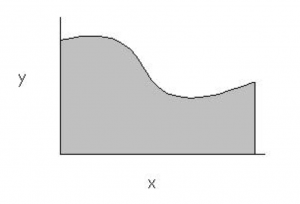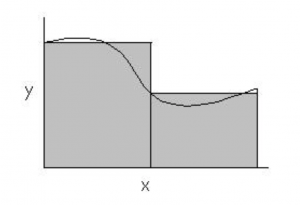There are rules if you want to succeed in this class. Clarissa Audrey (51844165), Mariana Paspuel (44069169), Tong Cui/Chelsea (31032162), Hongjiang Ye/Violet (52433166) present to you these guidelines, follow them (and some lucks) and you may be the top star!
1. If you’re confused, don’t be embarrassed to ask simple math question, like

Seriously, don’t wait until last minute to ask, you might (and always) forget.
2. If you wanna skip, skip the lecture, not the tutorial

Tips: Work best if you don’t skip at all.
3. Late to class? It’s better late than…

…never
4. Office hour is “ask everything you want” time

5. If you’re looking at your homework like this

or like this

come for help!
6. You will likely fail this class if you cheat, so don’t.

P.S. I never cheat and still fail this class.
7. If you fail on a test, don’t be down! Because 95% chance you’re not alone.

One for all, all for one!!
8. The question on the test is as simple as: If John have 3 apples and Tim give him another 5 apples, then Jess eat 2 of the apples. How many apples does Terry have?

Who the hell is Terry?

Seriously, most of the exam questions don’t make sense at all.
9. If you don’t know what to write, just write anything you know


and may God bless the teacher who grades your test.
10. Last minute studying before exam won’t work

11. Math needs
12. Look who were there for you when you’re at your worst. Your goddamn self.

So, encourage yourself!
14. Tomorrow is a mythical land, do it now.

15. HA! You don’t realize that I skipped 13 right? Come on man, this is math. Gotta be careful with numbers.

13. Math is not always step forward. Sometimes you gotta step back to fully understand. So, here’s your 13.

16. Pray to Baby Jesus.

17. Piazza is there if you’re stuck on maths!

18. If you’re terrified when Professors ask a question, instead of

Stare into their eyes

until they’re uncomfortable.
19. Enough sleep!

20. There always be those students that itch you to the core. In that case,

or in some cases,

21. When the question is too easy, most of the time it’s because you do it wrong

22. You may look at your teachers like this

But remember, they’re there to help you. Always.

23. Friday Quizzes!! L Not sure if the math test was easy or I got everything wrong

Note: Not always Math is that hard as you think. Trust yourself!!
24.First Math class, “Limits” find epsilon and delta. What in the world is that?


Do not scared about this, it is just two first weeks of class :’) :’)
25.Spend like 3 hours typing written assignments is totally fine at the beginning

Never ever present handwritten homework.
26. Avoiding eye contact with your instructor because you do not know the answer to the question. Usually happens!!

Do not be scared to be wrong, that’s part of learning.
27. Do not be late for lectures, Dr. Leung will realize everything. (e-v-e-r-y-t-h-i-n-g)

Consider Math as the most important course ever
28. When you finally understand what the class was about. You are like…

Keep trying and always give your best.
29. When you don’t know how to start written homework. Try!! Is not difficult as it looks.

30. When your instructor says that the power series (1/n^2)= (pi^2/6) and you need to used the Taylor series of sin(x). You are like…





